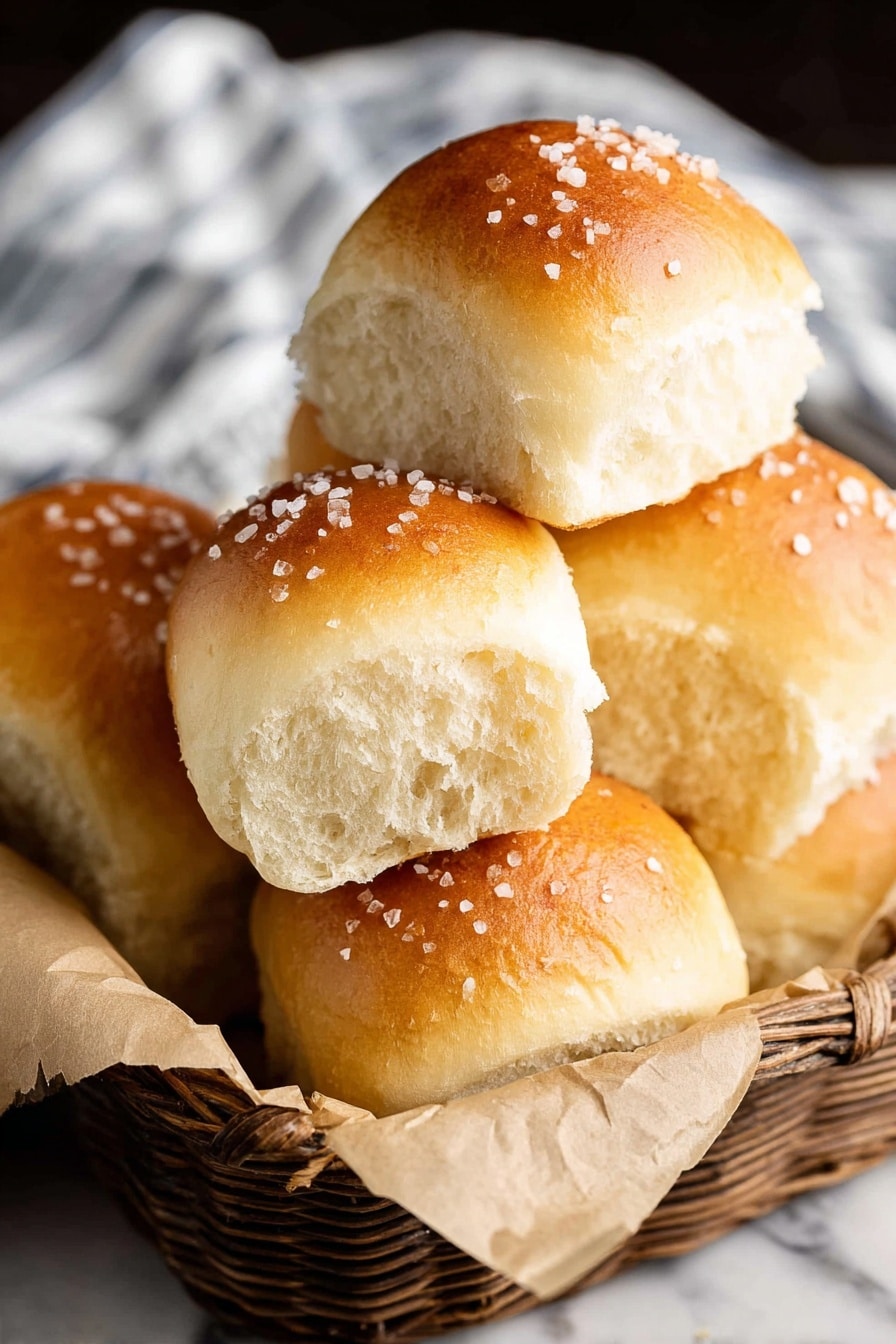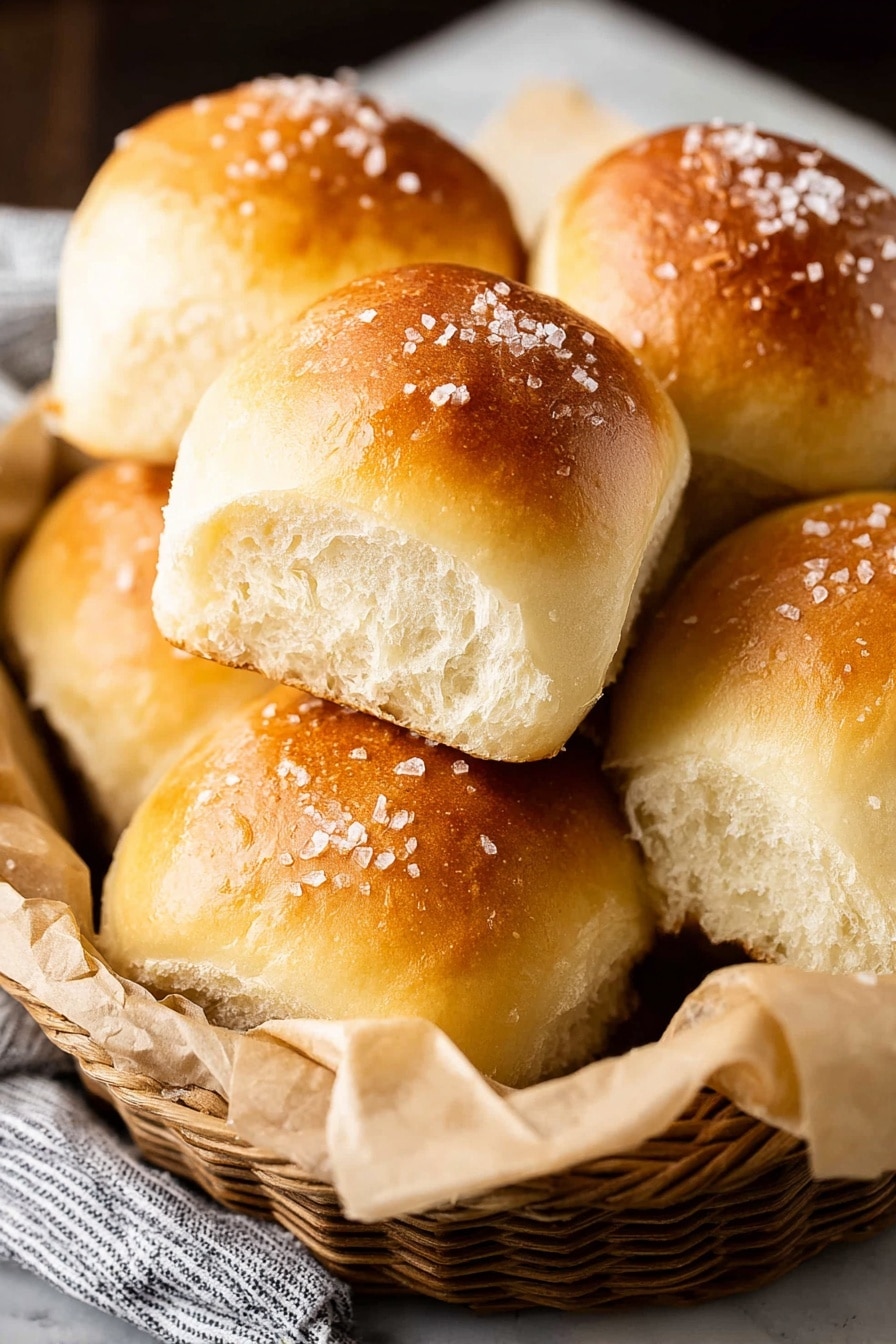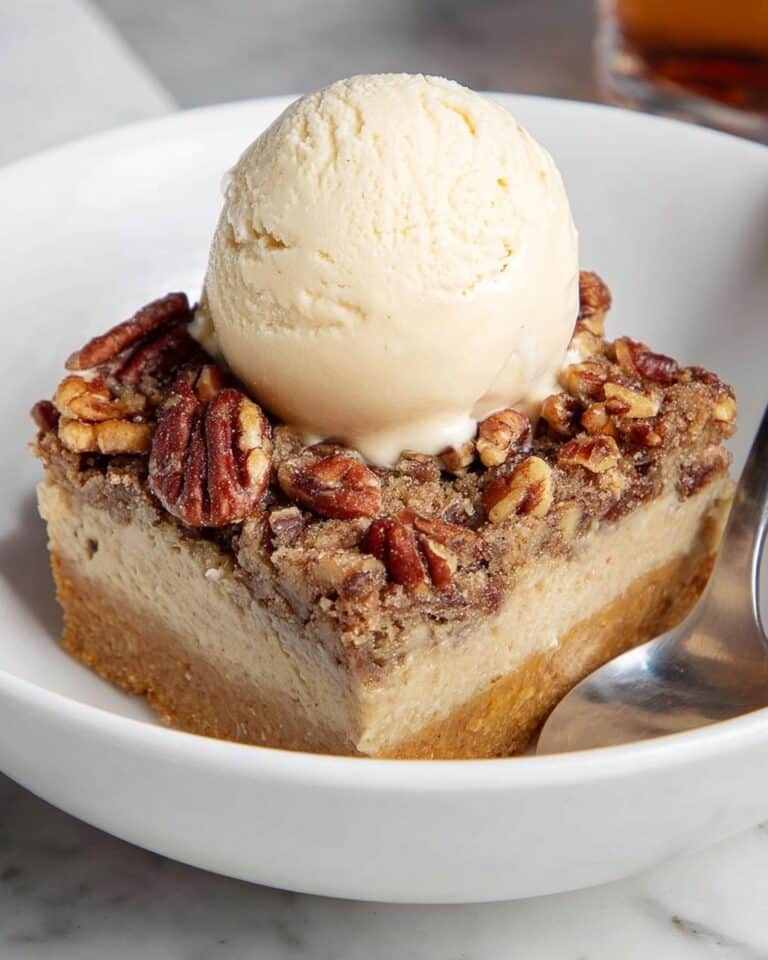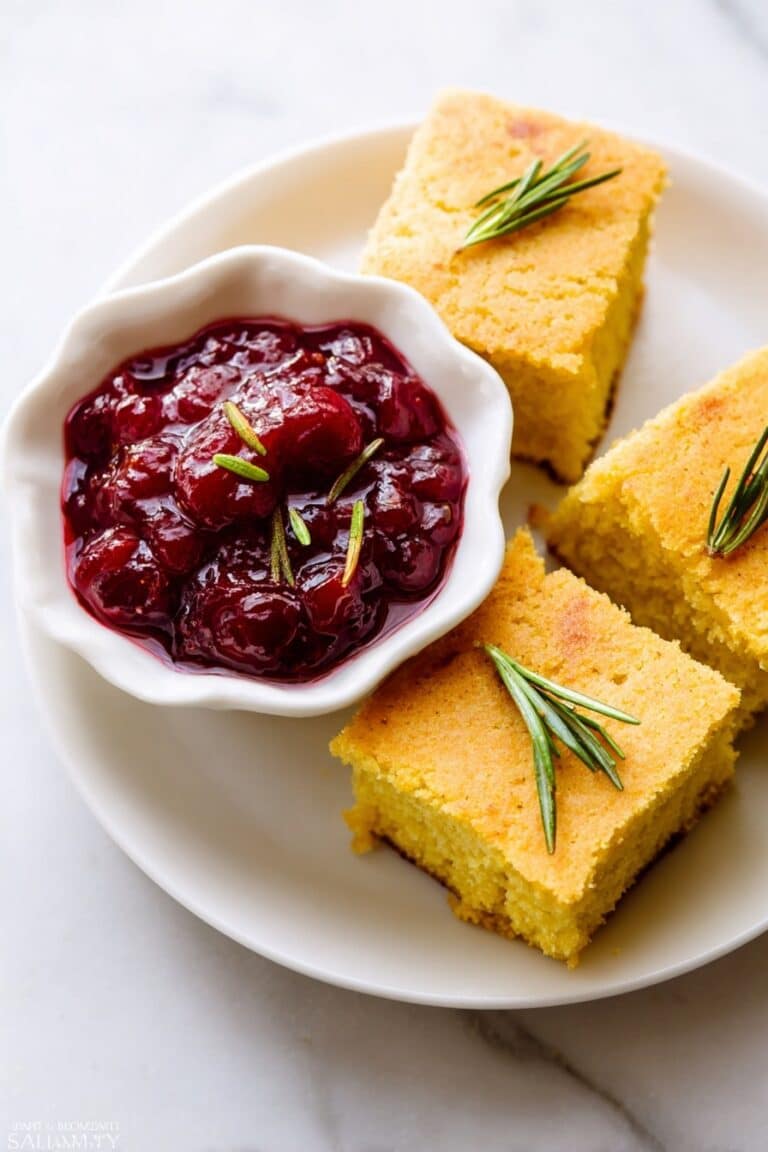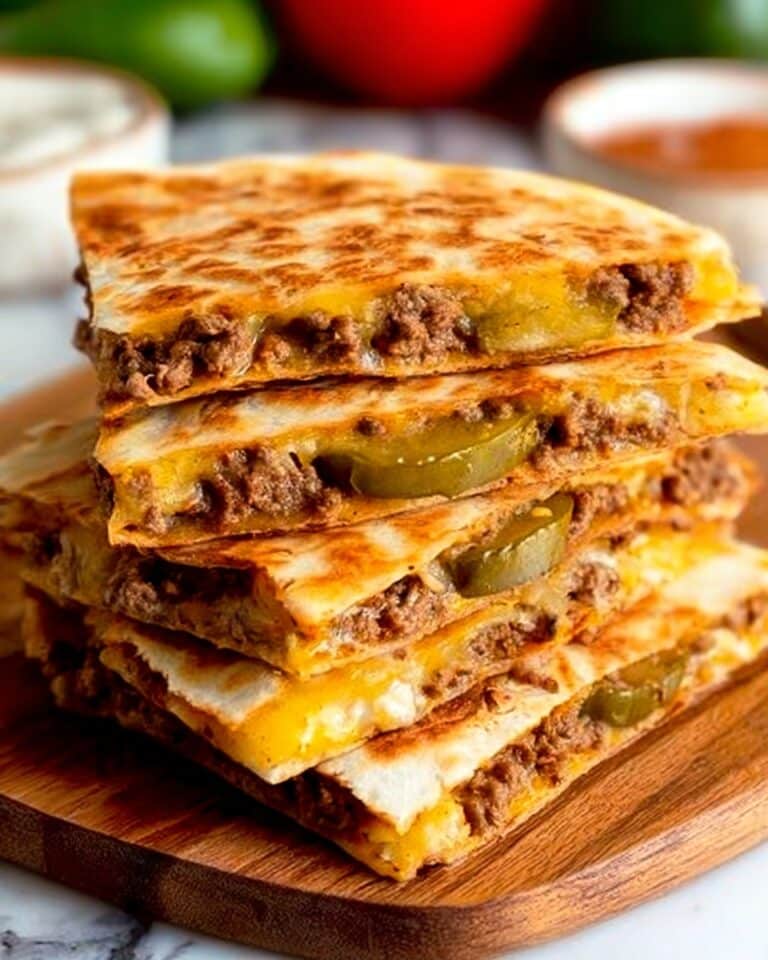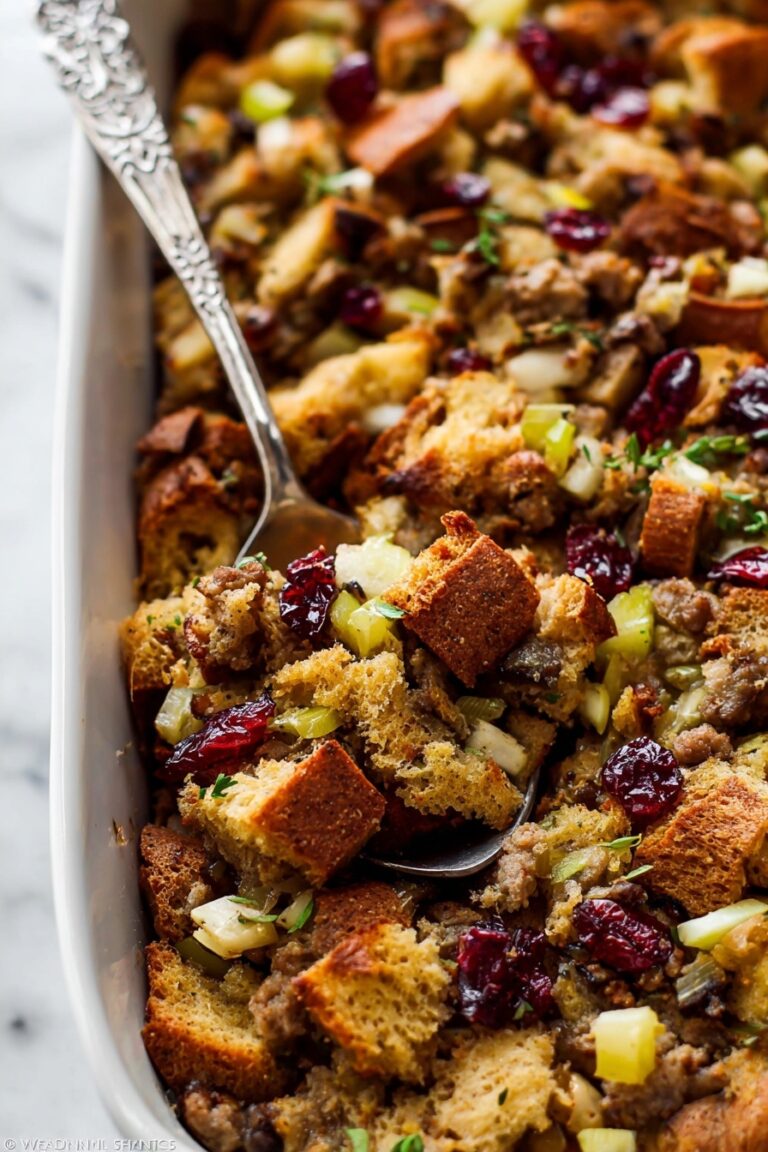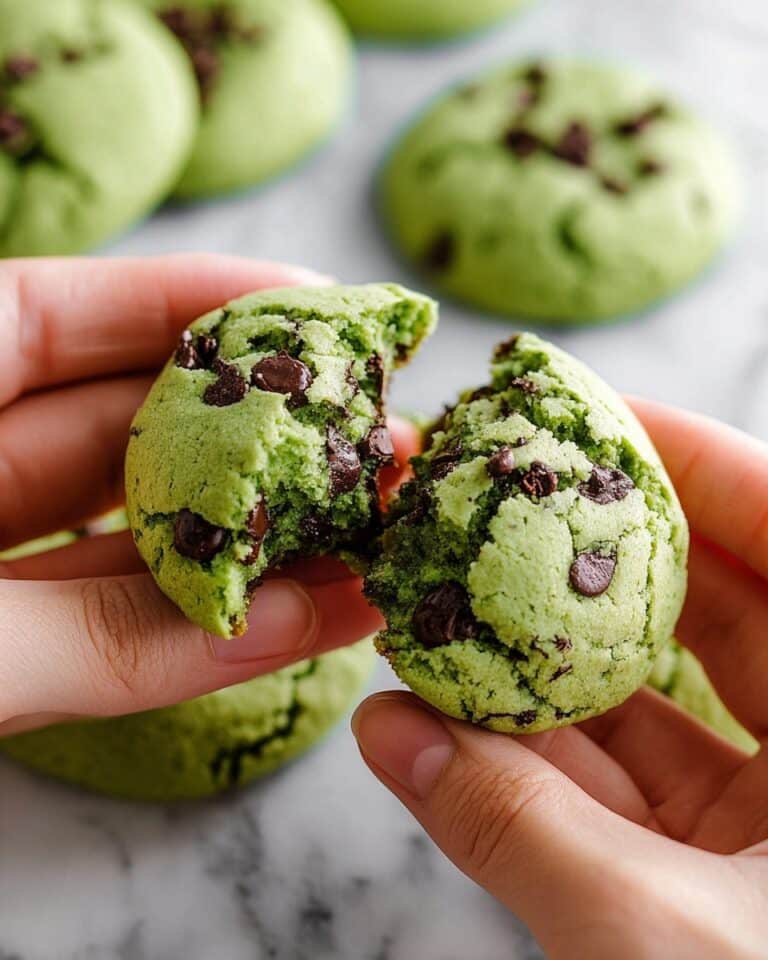If you’ve ever wished for a dinner roll recipe that brings that perfect soft, buttery, pull-apart goodness straight to your kitchen table, you’re going to love what I’m about to share. This Best Homemade Dinner Rolls Recipe is one of those recipes that quickly became a family favorite in my house—and once you try it, I bet it’ll be yours too. The rolls come out irresistibly fluffy, with a golden crust and just the right hint of sweetness. So grab your mixing bowl and let’s jump right in!
Why You’ll Love This Recipe
- Fluffy and Soft Texture: You’ll enjoy rolls that are tender inside with just the right golden crust on the outside every time.
- Simple, Reliable Ingredients: No fancy extras needed—just everyday pantry staples that work together to make magic.
- Perfect for Any Meal: These rolls shine at holidays, weeknight dinners, or even for sandwiches the next day.
- Make Ahead Friendly: Freeze the dough or finished rolls to have fresh bread on demand.
Ingredients You’ll Need
Every ingredient here plays a key role in making these rolls soft, flavorful, and easy to work with. I always recommend using fresh yeast and whole milk for the best results, and make sure your butter is melted but not hot—trust me, it makes a difference!
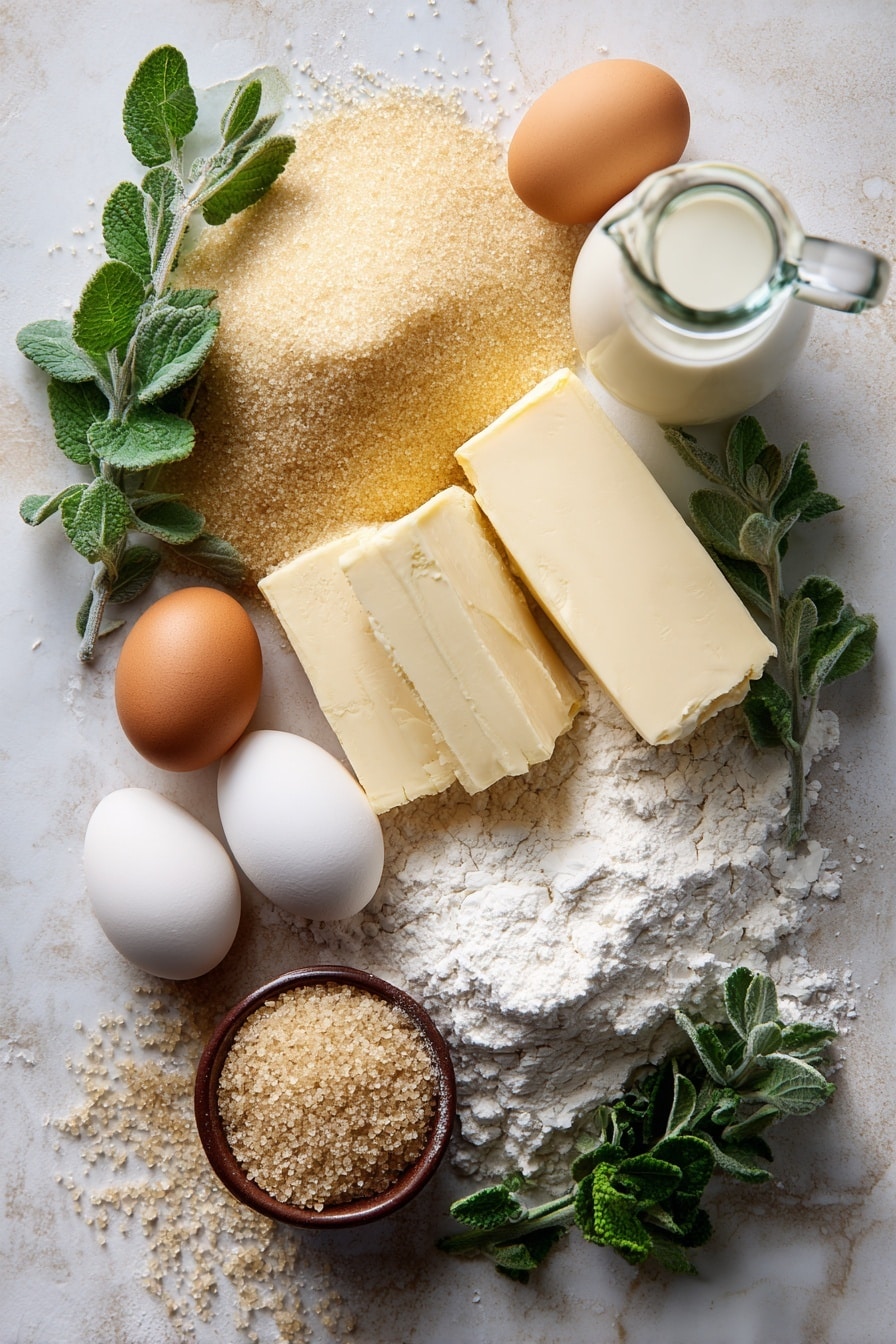
- Warm Water: About 105°F is perfect to activate the yeast without harming it.
- Granulated Sugar: Helps feed the yeast and adds a touch of sweetness to balance the butteriness.
- Active Dry Yeast: The magic agent for soft, airy rolls; make sure it’s fresh for the best rise.
- Salted Butter: Adds rich flavor and tenderness; I like to melt and cool it to just the right temp.
- Whole Milk: The fat in whole milk makes these rolls ultra-moist—room temperature is key.
- Egg: Brings structure and beautiful color—lightly beaten and at room temperature works best.
- Sea Salt: Balances sweetness with a subtle savory note—essential for flavor depth.
- All-Purpose Flour: The foundation for these rolls; I gradually add more to get the perfect dough texture.
- Coarse Sea Salt (for topping): Adds a bit of crunch and that bakery-like finish when sprinkled on top.
Variations
I love to tweak these rolls to fit different moods or meals, and there are several easy ways you can make this recipe your own. Whether you want to add herbs for an herby twist or switch up the flour, you’ll find these rolls quite forgiving and adaptable.
- Herbed Rolls: Sometimes I toss in some fresh rosemary or thyme into the dough for an earthy flavor that goes great with soups and stews.
- Whole Wheat Twist: If you want a heartier version, swapping half the flour for whole wheat adds nutty complexity—just expect a denser texture.
- Honey Swap: Replacing granulated sugar with honey adds a lovely floral sweetness and even makes the crumb super soft.
- Dairy-Free Option: I’ve tried using almond milk and vegan butter, and while the rolls are a bit different, they’re still delicious and soft.
How to Make Best Homemade Dinner Rolls Recipe
Step 1: Proof Your Yeast to Kickstart the Dough
This is one of those steps you really don’t want to skip. Pour your warm water, sugar, and yeast into your mixing bowl and let it sit for 5 to 10 minutes until it’s gloriously foamy on top. When I first tried skipping this, my rolls barely rose, so trust me—wait for the foam!
Step 2: Combine Butter, Milk, and Egg
Once your yeast is bubbly, add the cooled melted butter, room temperature milk, and lightly beaten egg right into the bowl and stir gently to combine. This mix keeps the dough tender and gives you that beautiful rich flavor you want in dinner rolls.
Step 3: Mix in Flour and Salt, Then Knead
Start with 3 cups of all-purpose flour and the salt. Attach your dough hook and knead the mixture on low speed. The dough will be slightly tacky but should pull away from the sides of your bowl. Add more flour, a little at a time, if the dough feels too sticky—aim for just the right balance since too much flour can dry your rolls out.
Step 4: First Rise Until Dough Doubles
Grease a large bowl and place your dough inside. Cover with a damp cloth and set it somewhere warm for about an hour or until doubled in size. I like to rest mine in my oven with the light on for a cozy spot—works like a charm every time.
Step 5: Shape and Second Rise
After the dough has risen, gently punch it down to release the gas. Flour your hands and divide the dough into 12 equal balls. Here’s a trick I learned: using a food scale to weigh each dough ball ensures your rolls bake evenly. Roll each one into a smooth ball, place them in your parchment-lined baking pan spaced evenly, then cover with a damp towel and let rise again until doubled—about 30 to 60 minutes. Be sure the towel doesn’t touch the dough to avoid sticking!
Step 6: Bake to Golden Perfection
While the rolls are rising, preheat your oven to 375°F. When they’ve risen about halfway, pop them in and bake for 25 to 30 minutes. You’ll know they’re done when they’re a beautiful golden brown and sound hollow when tapped gently. An instant-read thermometer is a handy tool here—aim for an internal temp of 185-190°F for perfect doneness.
Step 7: Butter and Salt Finish
Right when you take them out of the oven, brush the tops with melted butter and sprinkle coarse sea salt. This step adds an irresistible glossy finish and a touch of crunch that complements the softness inside. Let them cool slightly, then serve warm—trust me, you won’t regret it.
Pro Tips for Making Best Homemade Dinner Rolls Recipe
- Temperature Matters: Always check that your water and ingredients are at the right temperature—too hot and you kill the yeast, too cold and it won’t activate properly.
- Even Dough Balls: Using a kitchen scale to weigh each dough ball helps you get consistent sizes and uniform baking.
- Gentle Handling: Don’t rush punching down your dough or shaping the rolls because gentle handling keeps that soft crumb intact.
- Avoid Over-Baking: Pull your rolls out as soon as they’re golden and hollow sounding to keep them tender, not dry.
How to Serve Best Homemade Dinner Rolls Recipe
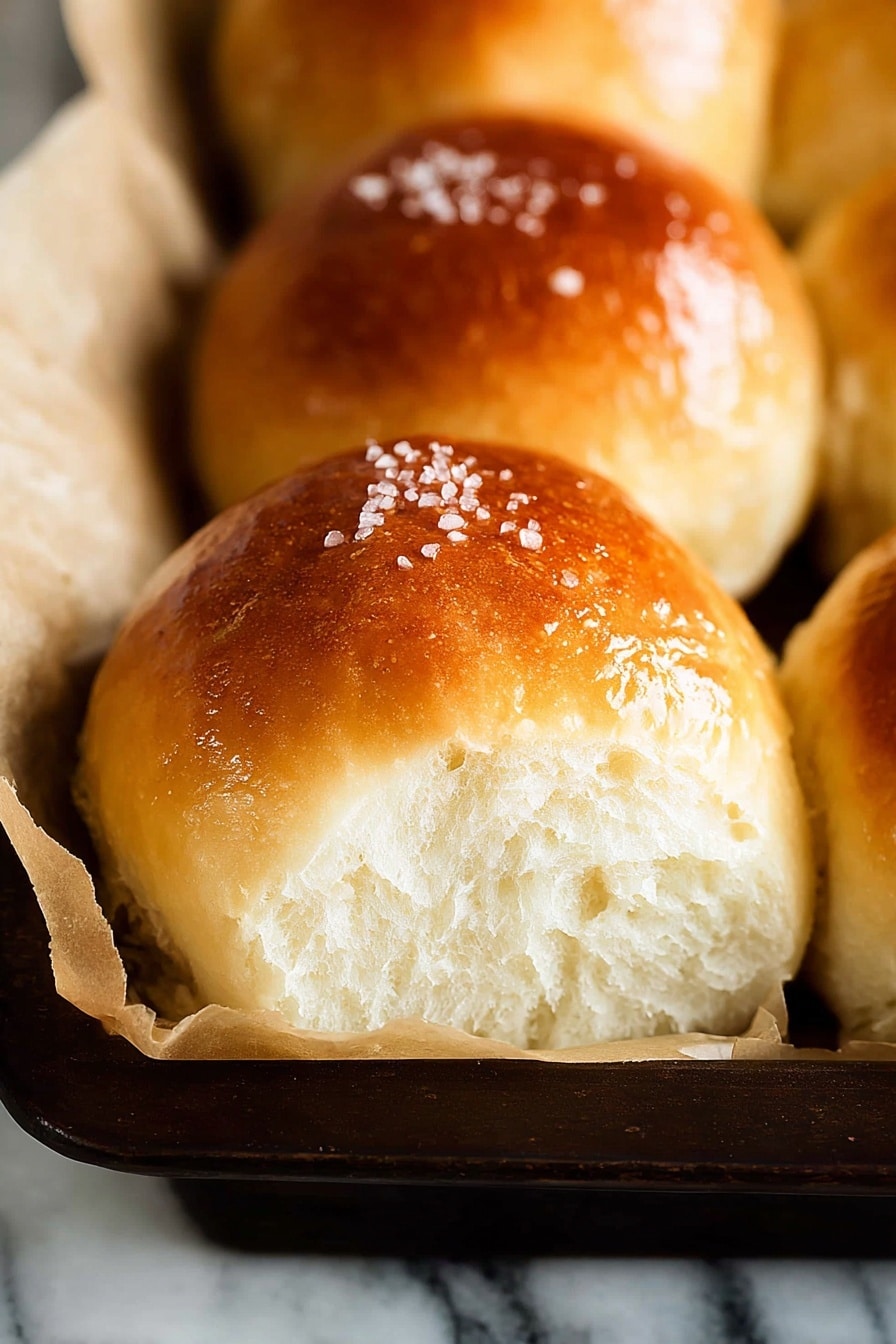
Garnishes
I like brushing my rolls with a little extra melted butter right before serving for that warm shiny look and buttery taste. Sometimes, I sprinkle a bit of fresh chopped parsley or garlic powder on top if I’m going for a garlic butter vibe—those garnishes add a fresh, savory touch that’s always a hit.
Side Dishes
These rolls are fantastic alongside classic comfort dishes like homemade chicken pot pie, beef stew, or even a hearty bowl of chili. When hosting, I’ve paired them with roasted veggies and mashed potatoes for a full spread that earns all the compliments.
Creative Ways to Present
One of my favorite presentations is arranging the rolls in a wreath shape on a round baking pan, brushing them with garlic butter, and serving as a party centerpiece. They look beautiful, smell amazing, and everyone reaches for one immediately—a guaranteed crowd-pleaser at holidays or special dinners.
Make Ahead and Storage
Storing Leftovers
Once cooled, I store leftover rolls in an airtight container at room temperature for up to 3 days. They stay soft and flavorful if you avoid the fridge, which can dry them out. Just reheat gently to bring back that fresh-baked feel.
Freezing
I often freeze the dough balls right in the pan before the second rise. Cover tightly with plastic wrap and foil, and freeze up to a month. When I’m ready, I take them out, let them thaw and rise fully, then bake as usual. You can also freeze baked rolls in an airtight bag for up to two months and thaw as needed.
Reheating
Gently warming leftover rolls in the oven at 300°F for 5–7 minutes works wonders to revive that soft texture and buttery aroma. Microwave works in a pinch, but a quick oven warm-up really keeps the crust just right.
FAQs
-
Can I use instant yeast instead of active dry yeast?
Absolutely! If you’re using instant yeast, you can mix it directly with the flour, skipping the proofing step. Just be sure to adjust rising times as instant yeast works a bit faster.
-
What if my dough is too sticky or too dry?
If your dough is sticky, sprinkle in flour gradually while kneading until it’s manageable but still soft. Too dry? Add a little warm water, one tablespoon at a time, to bring it back to life. Dough consistency is key, so trust your touch over measurements here.
-
How do I know when the rolls are fully baked?
Look for a deep golden top and perform the hollow tap test—when you lightly tap the roll and it sounds hollow, it’s done. Using an instant-read thermometer between 185-190°F is even more accurate and takes the guesswork out.
-
Can I make these rolls gluten-free?
Gluten-free baking can be tricky with yeast breads, and this recipe isn’t designed for gluten-free flour blends. However, there are specialized gluten-free bread recipes you might want to explore for similar fluffy rolls.
Final Thoughts
I absolutely love how these Best Homemade Dinner Rolls Recipe come out every single time—soft, buttery, and welcoming like a warm hug from the oven. Whether you’re a novice baker or someone who’s struggled with rolls before, this recipe is forgiving and fun to make. I encourage you to try it out this week and share the warm, delicious results with your family or friends. You might just find yourself baking these irresistible rolls over and over again—just like I do!
Print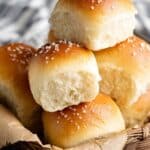
Best Homemade Dinner Rolls Recipe
- Prep Time: 10 minutes
- Cook Time: 30 minutes
- Total Time: 2 hours 40 minutes
- Yield: 12 dinner rolls
- Category: Bread
- Method: Baking
- Cuisine: American
Description
These Best Homemade Dinner Rolls are soft, fluffy, and buttery with a perfect golden-brown crust. Made from scratch with simple ingredients like yeast, milk, butter, and flour, they’re the ultimate accompaniment to any meal. Perfect for holiday dinners, family gatherings, or cozy weeknight meals, these rolls come out warm, tender, and utterly irresistible every time.
Ingredients
Dough
- ½ cup warm water (about 105°F)
- ¼ cup granulated sugar
- 1 tablespoon active dry yeast
- 6 tablespoons salted butter (melted and cooled)
- 1 cup whole milk (room temperature)
- 1 egg (room temperature, lightly beaten)
- ½ tablespoon sea salt
- 3-4 cups all-purpose flour
Topping
- 2 tablespoons salted butter (melted)
- Coarse sea salt (for sprinkling)
Instructions
- Line the pan: Line a 9×13-inch baking pan with parchment paper; set aside to prepare for baking the rolls.
- Proof the yeast: In the bowl of a stand mixer fitted with a dough hook, combine warm water, granulated sugar, and active dry yeast. Let sit for 5 to 10 minutes until the mixture becomes foamy, indicating the yeast is active.
- Make the dough: Once the yeast is foamy, add melted butter, whole milk, and lightly beaten egg to the mixer bowl. Stir to combine.
- Add flour and salt: Add 3 cups of all-purpose flour and sea salt to the wet ingredients. Use the dough hook to knead the mixture, adding more flour gradually until a slightly tacky dough ball forms, soft but manageable.
- First rise: Grease a large bowl generously and transfer the dough into it. Cover it with a damp cloth and set the bowl in a warm place to rise for about 1 hour or until the dough doubles in size.
- Deflate and shape: After the dough has doubled, lightly flour your hands and gently press the dough to remove any trapped gas. Divide the dough evenly into 12 equal pieces (using a food scale for precision), and roll each piece into a smooth ball.
- Arrange dough balls: Place the 12 dough balls onto the prepared baking pan, spacing them evenly in four rows of three.
- Second rise: Cover the shaped dough balls with a damp towel, making sure it doesn’t touch the dough, and allow them to rise again in a warm place until doubled in size, about 30 to 60 minutes.
- Preheat oven: When the rolls have risen about halfway through the second rise, preheat your oven to 375°F.
- Bake: Bake the rolls in the preheated oven for 25 to 30 minutes, until the tops are golden brown and the rolls sound hollow when tapped or reach an internal temperature of 185-190°F.
- Brush with butter and salt: Immediately remove the rolls from the oven and brush generously with melted butter. Sprinkle coarse sea salt over the top while warm.
- Cool and serve: Let the rolls cool slightly before serving warm to enjoy their soft, buttery texture.
Notes
- Ingredient substitutions: Whole milk is recommended but 2% or half and half can be used. All-purpose flour is preferred for the best texture; for whole wheat options, try a dedicated whole wheat roll recipe. Granulated sugar can be replaced with honey if desired. Unsalted butter can be substituted for salted butter.
- Make ahead and freeze: After shaping the dough into balls and placing them in the pan, cover tightly with plastic wrap and aluminum foil or a lid before the second rise. Freeze for up to 1 month.
- Baking after freezing: Thaw frozen rolls completely at room temperature and allow them to rise fully before baking as per recipe instructions. Alternatively, bake directly from frozen at 325°F for 25 minutes, then increase oven to 375°F and bake 10 more minutes.
- Storage: Store leftover rolls in an airtight container at room temperature for up to 3 days. Alternatively, freeze baked rolls in airtight containers or ziplock bags for up to 2 months.
Nutrition
- Serving Size: 1 roll
- Calories: 160
- Sugar: 4g
- Sodium: 210mg
- Fat: 6g
- Saturated Fat: 3.5g
- Unsaturated Fat: 2g
- Trans Fat: 0g
- Carbohydrates: 23g
- Fiber: 1g
- Protein: 4g
- Cholesterol: 30mg

